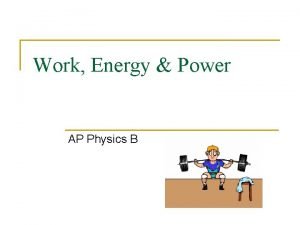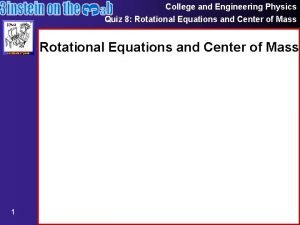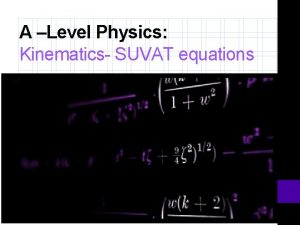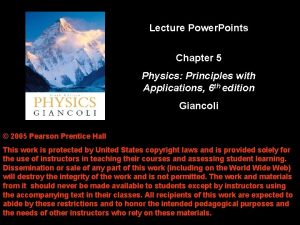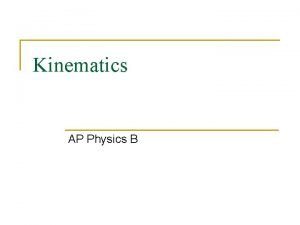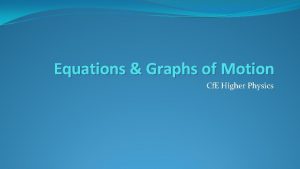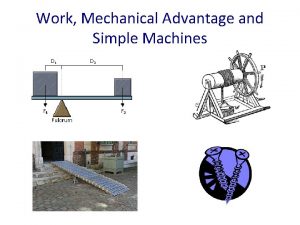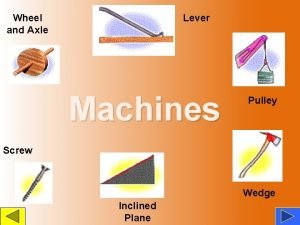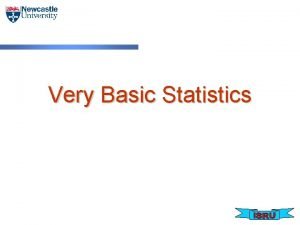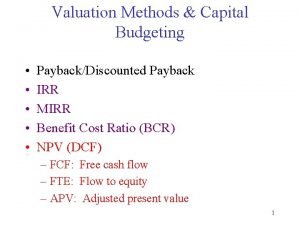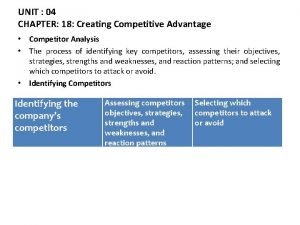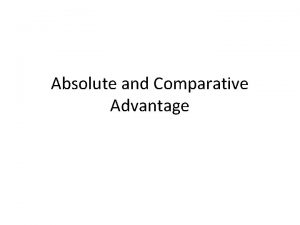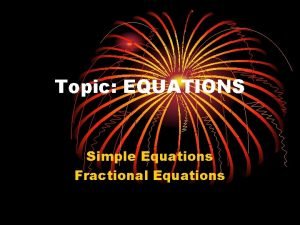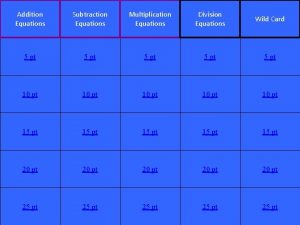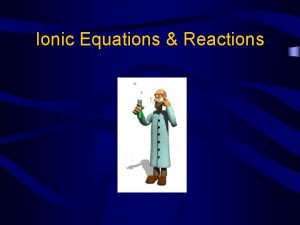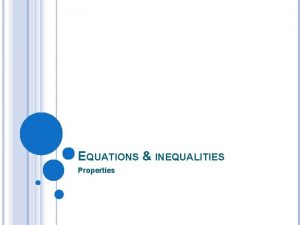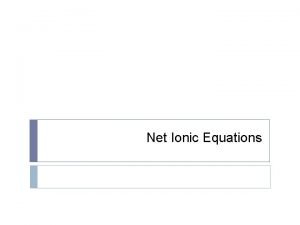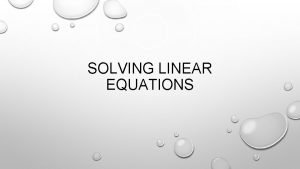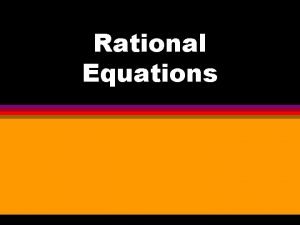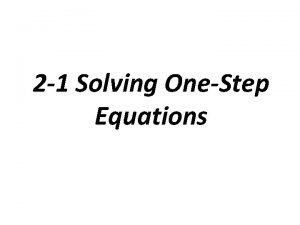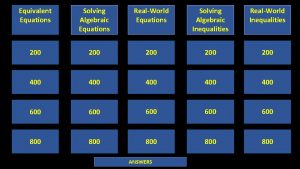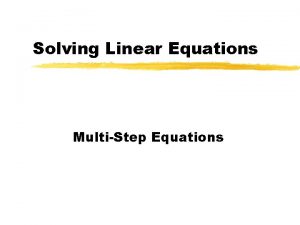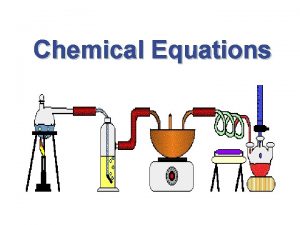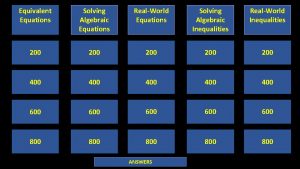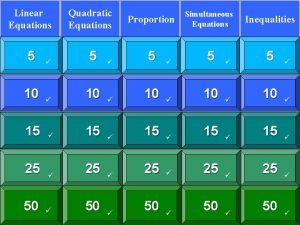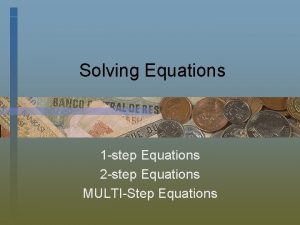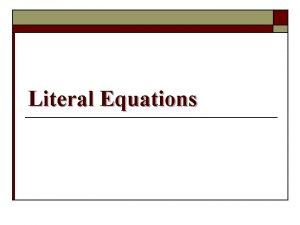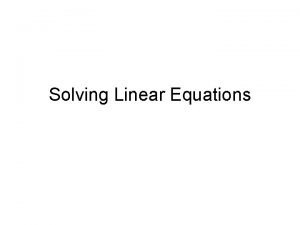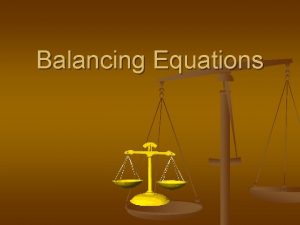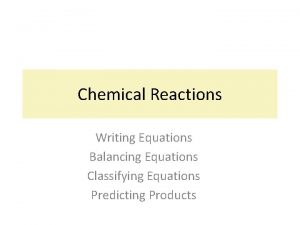Advantage Physics In physics equations are important tools

































- Slides: 33

Advantage Physics

In physics, equations are important tools for modeling observations and for making predictions. Physicists rely on theories and experiments with numerical results to support their conclusions. Different models of falling objects give different answers to how the speed of the object changes, or on what the speed depends, or which objects will fall. By measuring how an object falls, you can compare the experimental data with the results predicted by different models.

Does it make sense? Sometimes you will work with unfamiliar units, and you will need to use estimation to check that your answer makes sense mathematically. Do you know how much energy 5 Joules is? At other times you can check that an answer matches your experience. When you work with falling objects, for example, check that the time you calculate an object will take to fall matches your experience—a baseball dropping 5 m in 0. 002 s, or in 17 s, doesn’t make sense.

SI Units To communicate results, it is helpful to use units that everyone understands. The worldwide scientific community and most countries currently use an adaptation of the metric system to state measurements. The Système International d’Unités, or SI, uses seven base quantities, which are shown in Table 1 1.


These base quantities were originally defined in terms of direct measurements. Other units, called derived units, are created by combining the base units in various ways. For example, energy is meas ured in joules, where 1 joule equals one kilogram meter squared per second squared, or 1 J = 1 kg • m 2/s 2. Electric charge is measured in coulombs, where 1 C = 1 A • s. Direct Unit: Meters, Seconds Derived Unit (for velocity): Meters per Second

The micrometer is used to obtain very precise measurements of length. What units will we use to write down the values we measure?

FIGURE 2 9. The accuracy of any measurement depends on both the instrument used and the observer. After a calculation, keep only those digits that truly reflect the accuracy of the original measurement.


Dimensional Analysis You can use units to check your work. You often will need to use different versions of a formula, or use a string of formulas, to solve a physics problem. To check that you have set up a problem correctly, write out the equation or set of equations you plan to use. Before performing calculations, check that the answer will be in the expected units. A velocity calculation in meters per second is correct. If your answer is seconds per meter…. it’s not!

Unit Conversion Factors Choose a conversion factor that will make the units cancel, leaving the answer in the correct units. For example, to convert 1. 34 kg of iron ore to grams, do as shown below. You also might need to do a series of conversions. To convert 43 km/h to m/s, do the following:

Significant Digits Suppose you use a meterstick to measure a pen, and you find that the end of the pen is just past 14. 3 cm. This measurement has three valid digits: two you are sure of, and one you estimated. The valid digits in a measurement are called significant digits. The last digit given for any measurement is the uncertain digit. All nonzero digits in a measurement are significant.

Are all zeros significant? No. For example, in the measurement 0. 0860 m, the first two zeros serve only to locate the decimal point and are not sig nificant. The last zero, however, is the estimated digit and is significant. The measurement 172, 000 m could have 3, 4, 5, or 6 significant digits. This ambiguity is one reason to use scientific notation: it is clear that the measurement 1. 7200 x 105 m has five significant digits.

Arithmetic with significant digits When you perform any arithmetic operation, it is important to remember that the result never can be more precise than the least precise measurement. If you read data to 1 decimal place and do calculations with it…. You have 1 decimal place precision!


But sometimes we have to revise our theories…

When you visit the doctor for a checkup, many measurements are taken: your height, weight, blood pressure, and heart rate. Even your vision is measured and assigned a number. Blood might be drawn so measurements can be made of lead or cholesterol levels. Measurements quantify our observations: a person’s blood pressure isn’t just “pretty good, ” it’s 110/60, the low end of the good range.

What is a measurement? A measurement is a comparison between an unknown quantity and a standard. For example, if you measure the mass of a rolling cart used in an experiment, the unknown quantity is the mass of the cart and the standard is the gram, as defined by the balance or spring scale you use.

Precision Versus Accuracy Both precision and accuracy are characteristics of measured values. How precise and accurate are the measurements of the three students? Will a subsequent measurement produce the same value? The degree of exactness of a measurement is called its Precision. Accuracy describes how well the results of a measurement agree with the “real” value; that is, the accepted value as measured by competent experimenters.

Accuracy and Precision…are NOT the same Precision – each time you measure (or throw) it, you get nearly the same result. Accuracy – each measurement (or throw) is correct (or on target)

A series of expeditions succeeded in placing a GPS receiver on top of Mount Everest. This improved the accuracy of the altitude measurement: Everest’s peak is 8850 m, not 8848 m, above sea level.

The GPS consists of 24 satellites with transmitters in orbit and numerous receivers on Earth. The satellites send signals with the time, measured by highly accurate atomic clocks. The receiver uses the information from at least four satellites to determine latitude, longitude, and elevation. (The clocks in the receivers are not as accurate as those on the satellites. )

A GPS Satellite. One of 24 in orbit at any one time…

Today we have 3 things that didn't exist in the past: (1) The Internet, (2) Vast cellular phone coverage across the country and (3) 24 satellites circling the earth. These 3 technologies combine to provide wireless vehicle monitoring and tracking anywhere in North America.


Multiple Methods to Display Data!

The graph indicates a parabolic relationship; braking distance varies as the square of the original speed.

The graph shows the inverse relationship between the time required to travel a fixed distance and the speed.

Solving Equations Using Algebra



Oops…. I must have miscalculated that stopping distance

You don’t have to write out these definitions, but you DO need to make sure you know them!
 Mikael ferm
Mikael ferm Comparative advantage vs absolute advantage
Comparative advantage vs absolute advantage Actual mechanical advantage vs ideal mechanical advantage
Actual mechanical advantage vs ideal mechanical advantage From most important to least important in writing
From most important to least important in writing From most important to least important in writing
From most important to least important in writing Least important to most important
Least important to most important 9-3 polar and rectangular forms of equations
9-3 polar and rectangular forms of equations Translating chemical equations
Translating chemical equations Marking tools in sewing
Marking tools in sewing What is power
What is power An 82 kg male and a 48 kg female
An 82 kg male and a 48 kg female Physics equations quiz
Physics equations quiz Suva equation
Suva equation Simple harmonic motion equations
Simple harmonic motion equations Physics equations
Physics equations Kinematics all formulas
Kinematics all formulas Equations of motion higher physics
Equations of motion higher physics Why does it happen
Why does it happen University physics with modern physics fifteenth edition
University physics with modern physics fifteenth edition Simple physics ia ideas
Simple physics ia ideas Advantages and disadvantages essay vocabulary
Advantages and disadvantages essay vocabulary How does mechanical advantage work
How does mechanical advantage work How do you calculate mechanical advantage
How do you calculate mechanical advantage Compound machine
Compound machine How does a screw make work easier
How does a screw make work easier Merits and demerits of variance
Merits and demerits of variance Advantage of payback method
Advantage of payback method Infragistics test advantage
Infragistics test advantage Qatar karta
Qatar karta Features advantages benefits
Features advantages benefits Chapter 18 creating competitive advantage
Chapter 18 creating competitive advantage Chapter 18 creating competitive advantage
Chapter 18 creating competitive advantage Semi monocoque structure
Semi monocoque structure Difference between binary tree and threaded binary tree
Difference between binary tree and threaded binary tree









